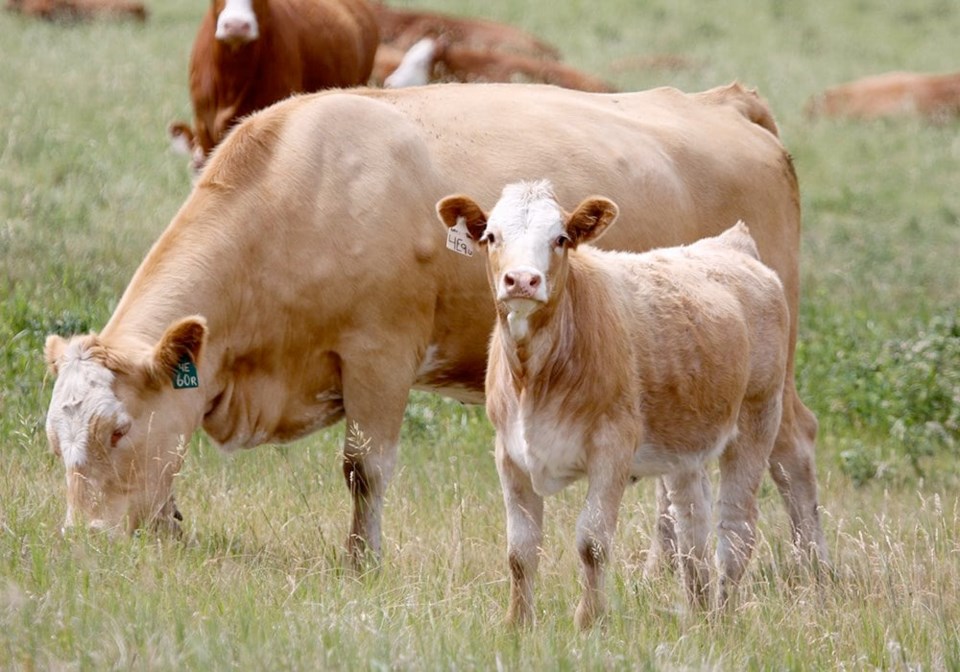SASKATOON — Livestock producers want gaps in business risk management programs addressed, saying it would help keep them in business.
A recent livestock summit heard that even with recent enhancements to AgriStability, the program doesn’t provide proper protection and they view other programs as expensive.
Core expenses for cow-calf producers are less likely to trigger AgriStability payments, said Stuart Chutter, a senior policy analyst at Alberta Financial Services Corp., during his presentation at the Agricultural Producers Association of Saskatchewan event.
“There are no livestock individual coverage yield-based insurance products that would be comparable to yield-based crop insurance products,” he said.
But he also noted that producers who don’t participate in programs aren’t covered at all. On the Prairies, participation in crop insurance is about 70 percent but that drops to about 30 percent when it comes to forage insurance or weather derivative programs.
He wondered whether that is because the programs aren’t effectively delivered.
He said participation in weather-related programs in Montana and North Dakota is about 80 percent, even though the product is inferior. They have fewer weather stations and no extreme heat coverage but representatives visit farms and ranches to get the program in front of producers.
Chutter said the first year of participation in a program can be confusing.
“Are we adequately supporting that first year of learning programs?” he asked.
Programs available in Ontario and Quebec that complement AgriStability are not actuarially sound, said Chutter. They offer support but are not based on premiums, and he said the Quebec program, if applied in Alberta in 2021, would have cost $1.1 billion.
Livestock price insurance, or LPI, has been available for some time yet without widespread uptake.
Producers on the panel said the premiums are expensive because they aren’t cost-shared with government. Chutter said shared premiums could be challenged as a trade subsidy.
“Is that subsidy worth the risk of $4.5 billion in beef exports?” he said.
Discussion could centre on an alternative that decreases the premium cost without a direct premium offset, he said.
But Levi Hull, a Saskatchewan Cattlemen’s Association director from Willow Brook, Sask., said he has a hard time believing Canada could be challenged, considering the level of support American producers get.
“I think it’s time that our groups, associations and government say enough is enough and we have to look after ourselves,” he said. “That’s the only way we’re going to survive.”
Julie Mortenson, who raises cattle and grain with her family near Nokomis, Sask., said she hasn’t been able to justify spending on the LPI premium because the cow-calf herd barely makes a profit. On their farm, the grain operation is essentially the risk management tool for the cattle. But she agreed that if producers don’t use tools available then they might disappear.
Hazel Dell, Sask., producer Brett Spray said in the past he could only insure for $1.80 a pound so hasn’t used LPI.
“If prices were that low and that got triggered, we were in trouble anyway,” he said.
One change to AgriStability that could help trigger payments would be to separate grain and cattle operations, he said to applause.
“Maybe we’re too honest,” he said. “Maybe my wife should be the grain person and I should be the cattle person.”
Chutter said BRM programs actually do bring a lot of money to the Prairies because of crop insurance.
“I really am trying to wrap my head around risk in cow-calf or cattle production,” he said. “Is production as much of a key risk as the crop sector or is it significantly less? I ask that wondering if we develop production insurance tools for the cow-calf sector, is that a win or is that a lower risk amongst all the different risks in livestock production (and) that is not a tool development area to target.”
Don Connick, an APAS representative from the Rural Municipality of Carmichael, said he worries the breakup of marginal land is an unintended consequence of crop insurance.
“Grain farms are able to buy this land, break it up and then purchase crop insurance and insure a profit on that for at least two years,” he said. “This is a shortcoming in the program that we haven’t figured out a solution for. It’s something we need to address.”
Mortenson said the move to individual coverage may help because growing crops on marginal land will affect overall averages.
Spray said he’d like to see a federal rangeland initiative to maintain this land.
“Allowing that marginal land to be broke up is not a positive impact on the environment or the industry as a whole. It is not sustainable,” he said.
Yet, sustainability is a cornerstone of federal government policy.
Chutter said protecting the beef herd is one of the best environmental policies in the country.
“Canadian cow-calf producers have so many wonderful policy support items they could present for why this industry deserves protection and warrants support,” he said.
For example, grazing or pasture costs are key expenses that aren’t eligible within AgriStability. Making them so would better support producers and also fulfil government objectives.
All federal programs require environmental and gender-based analysis and Chutter said organizations have to keep these in mind when putting solutions forward to optimize support from Ottawa.

